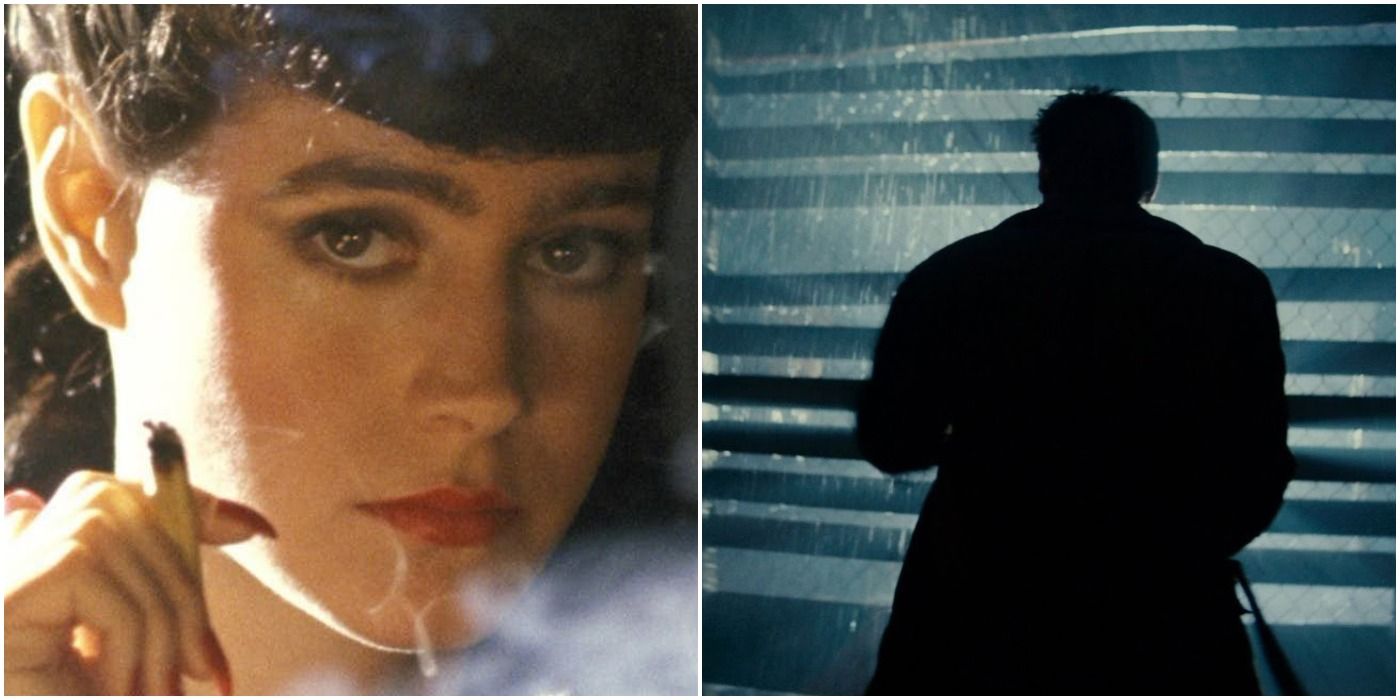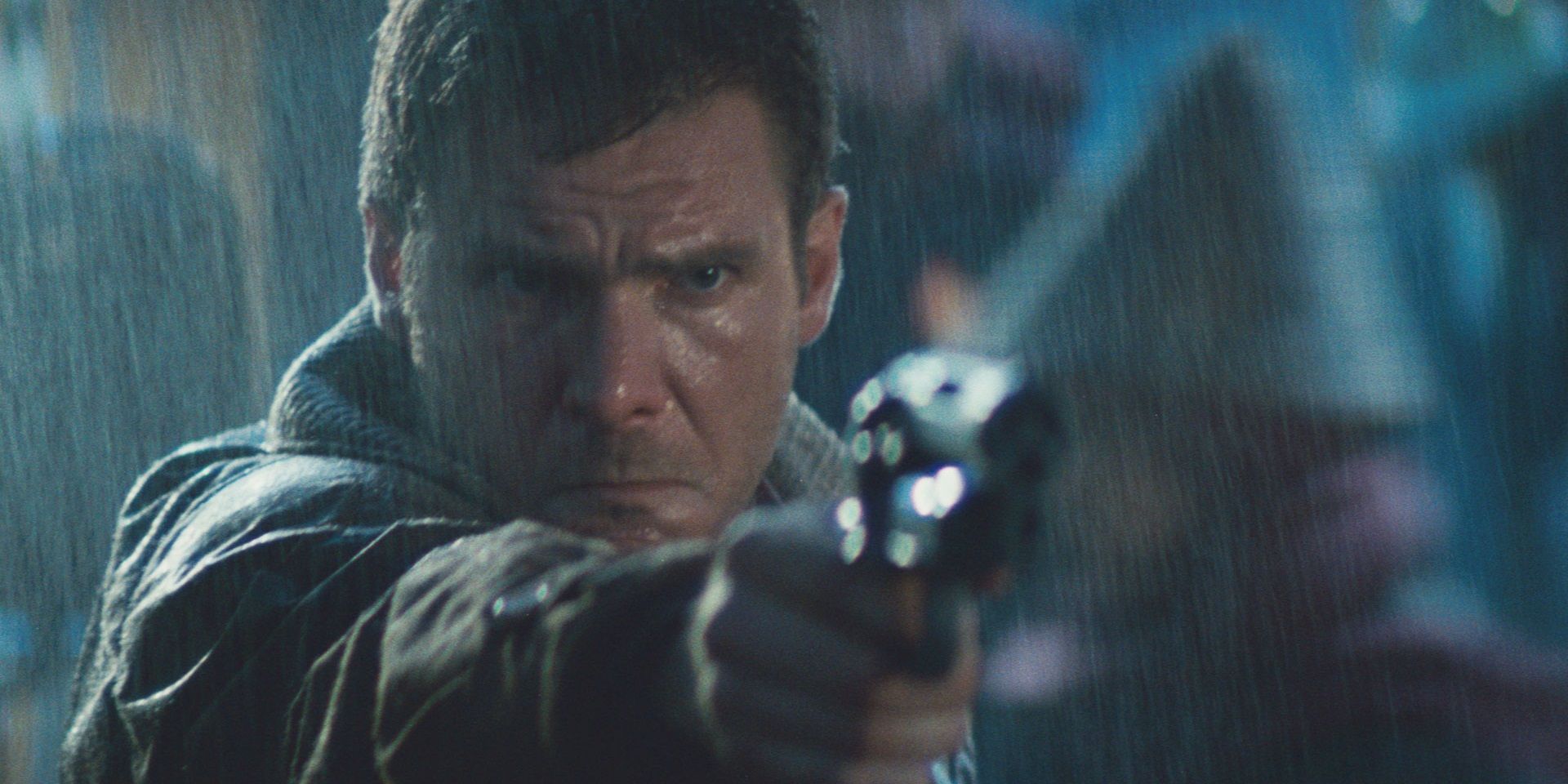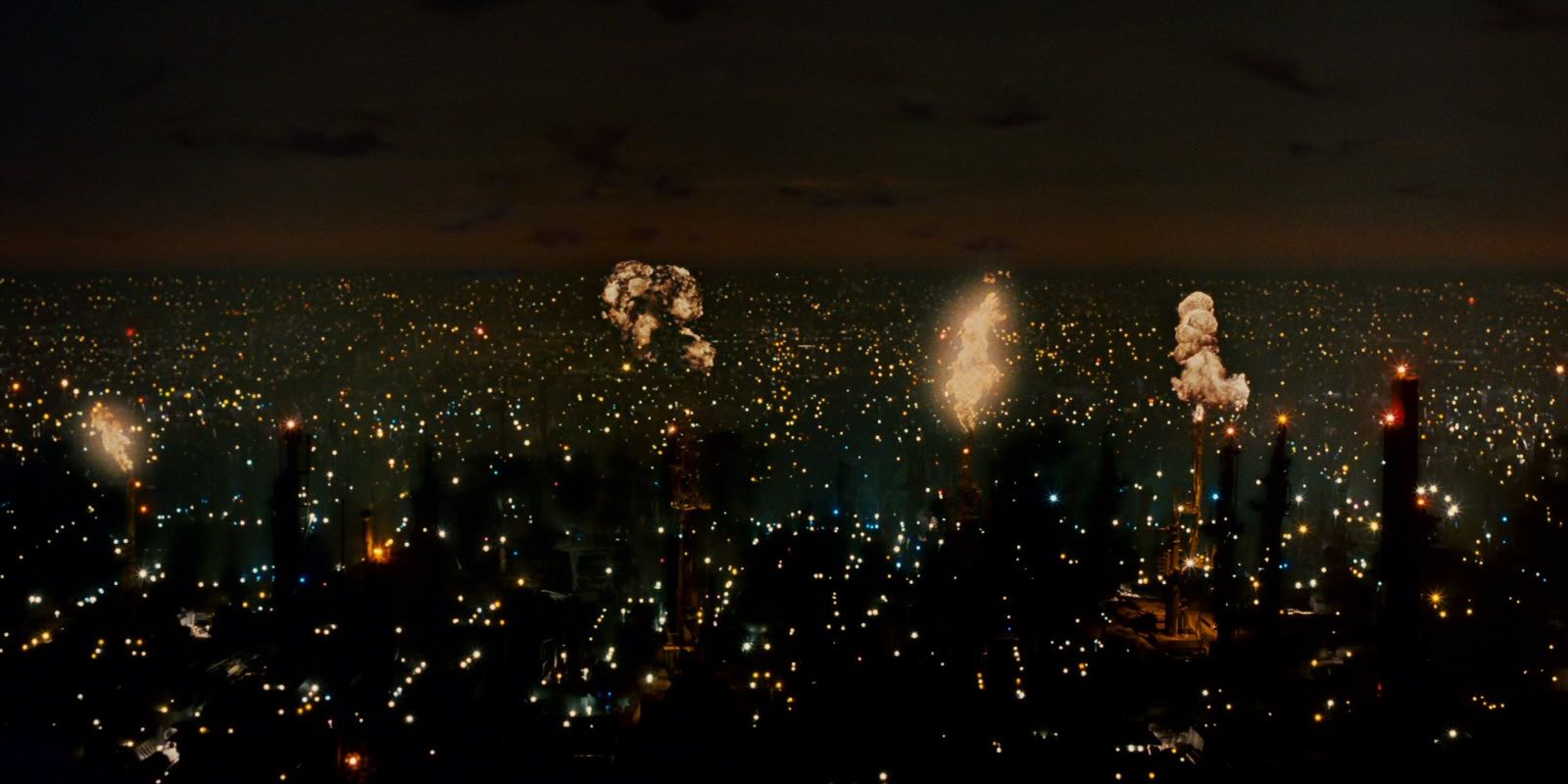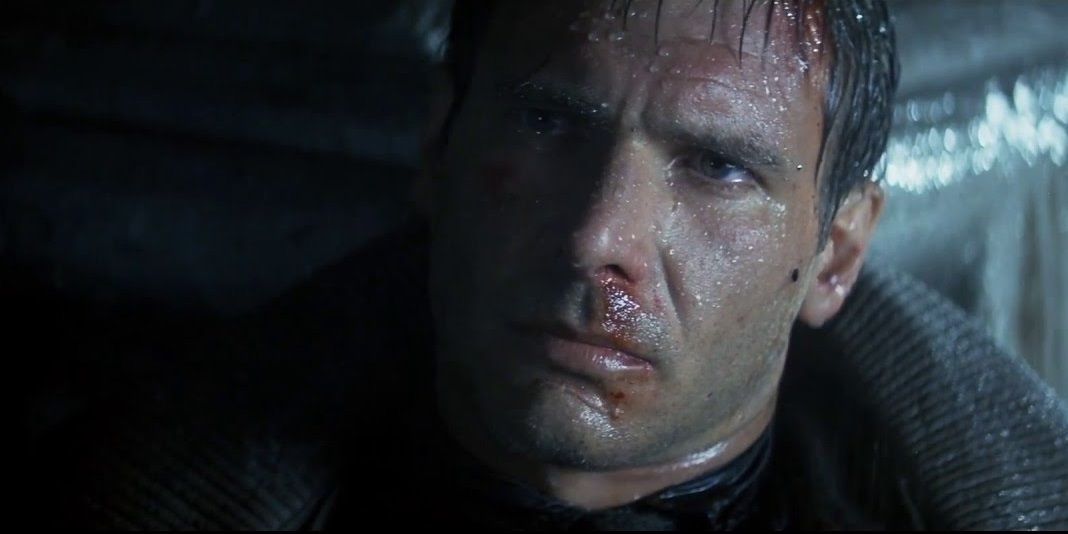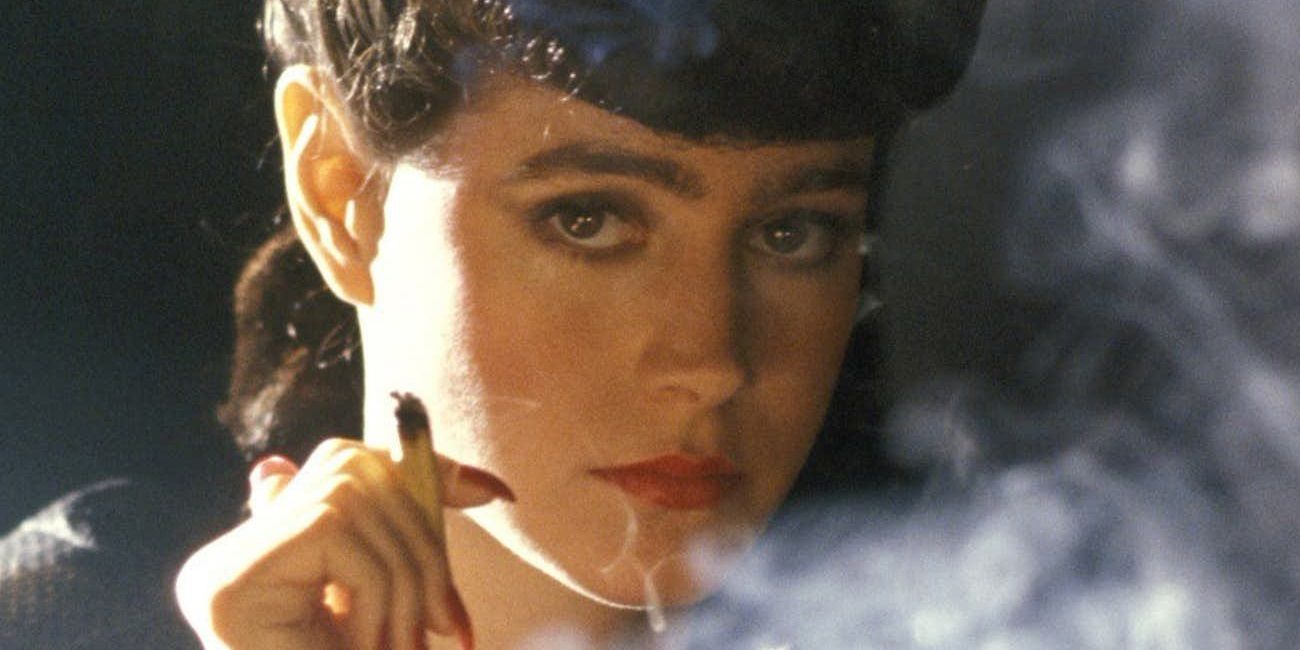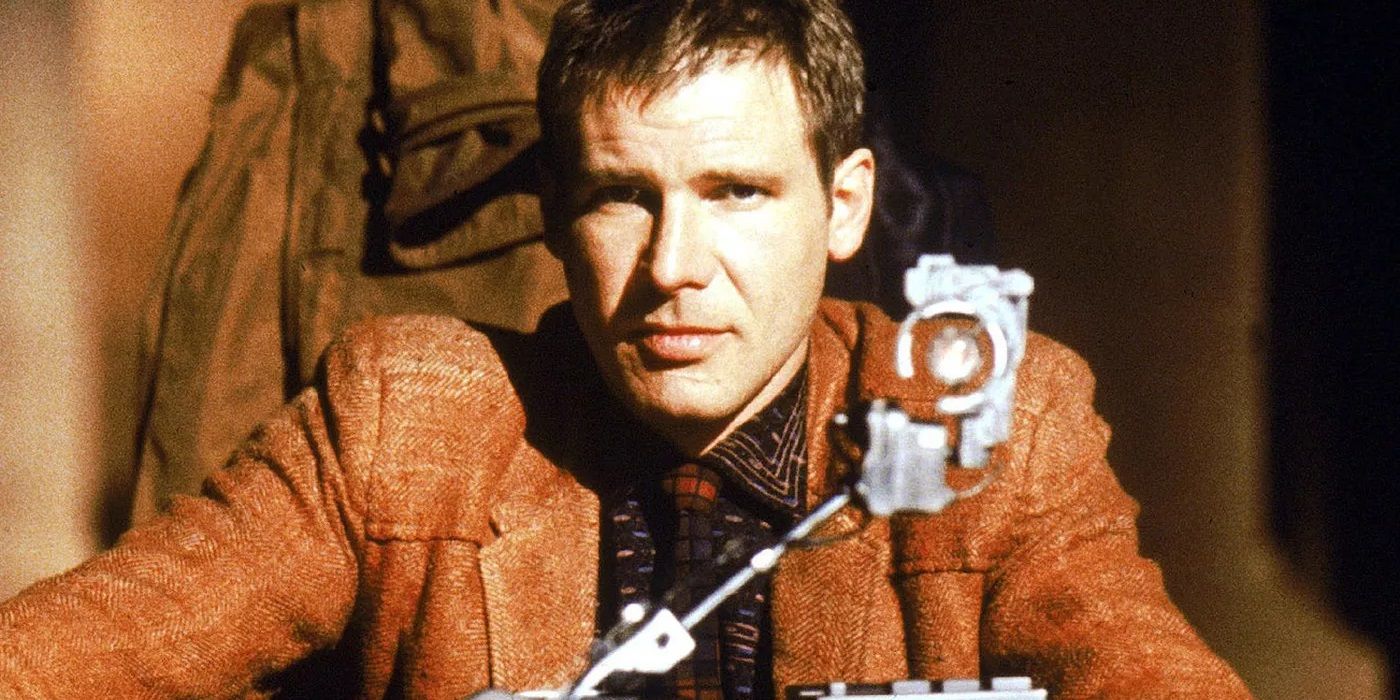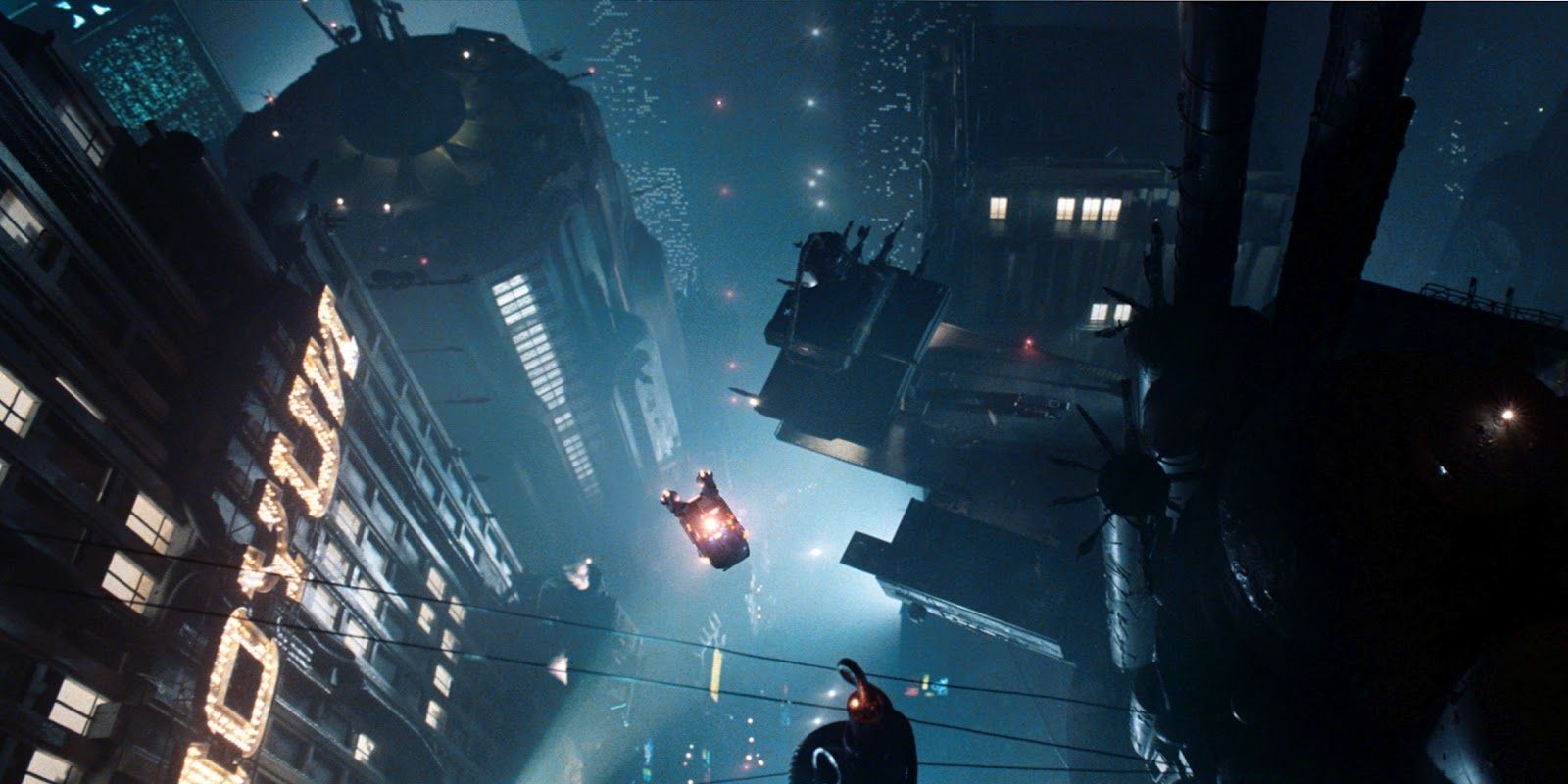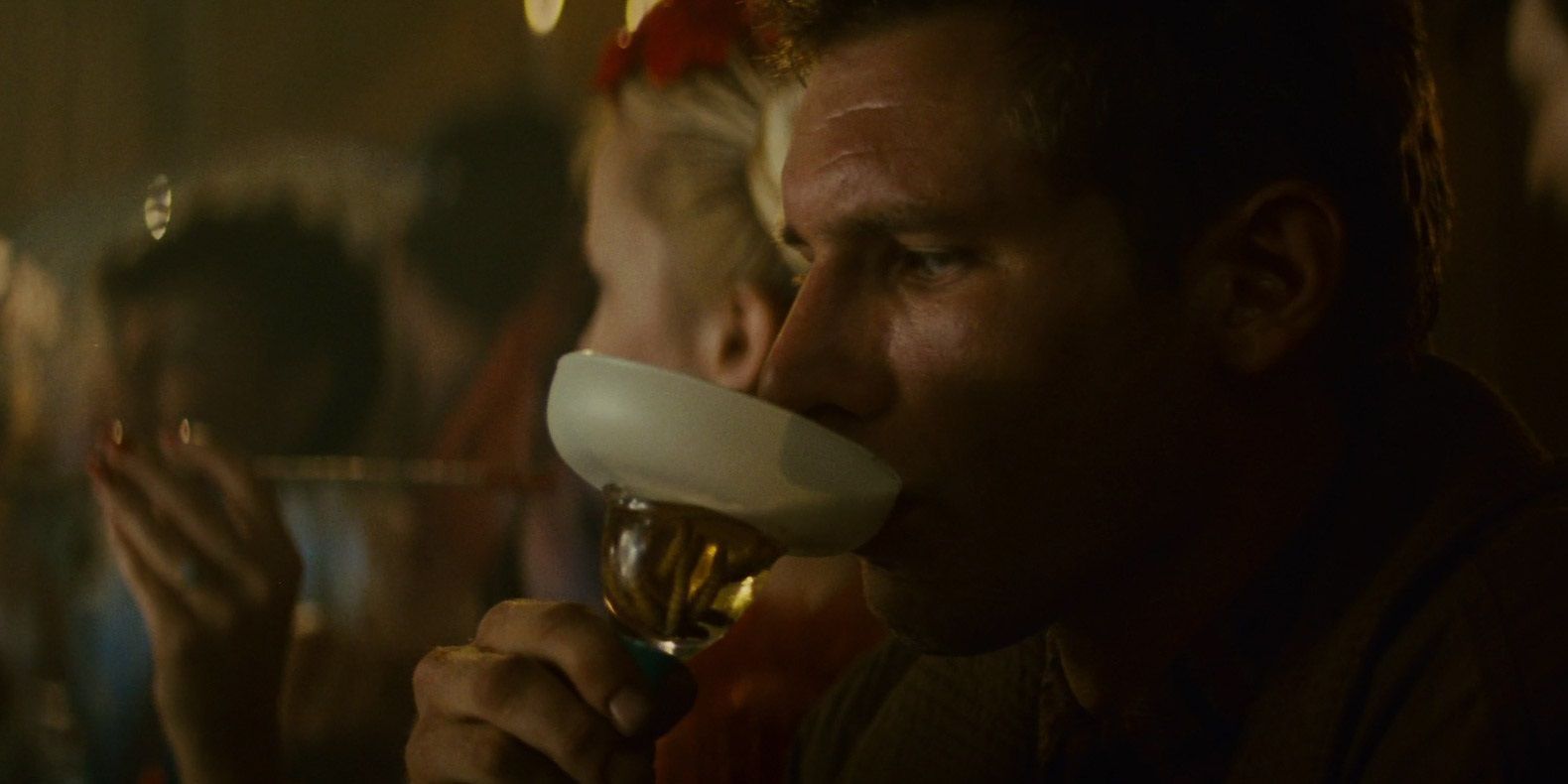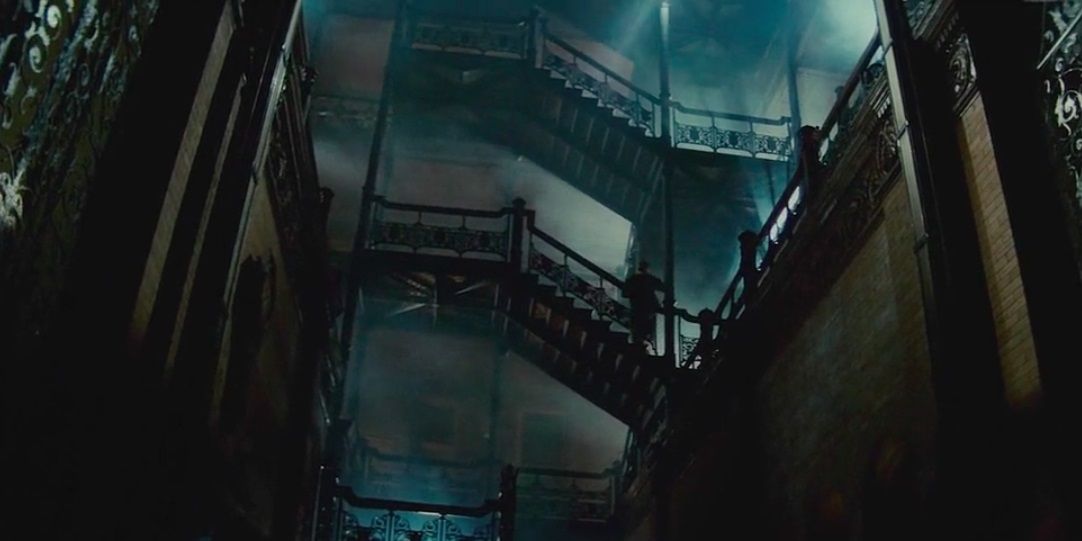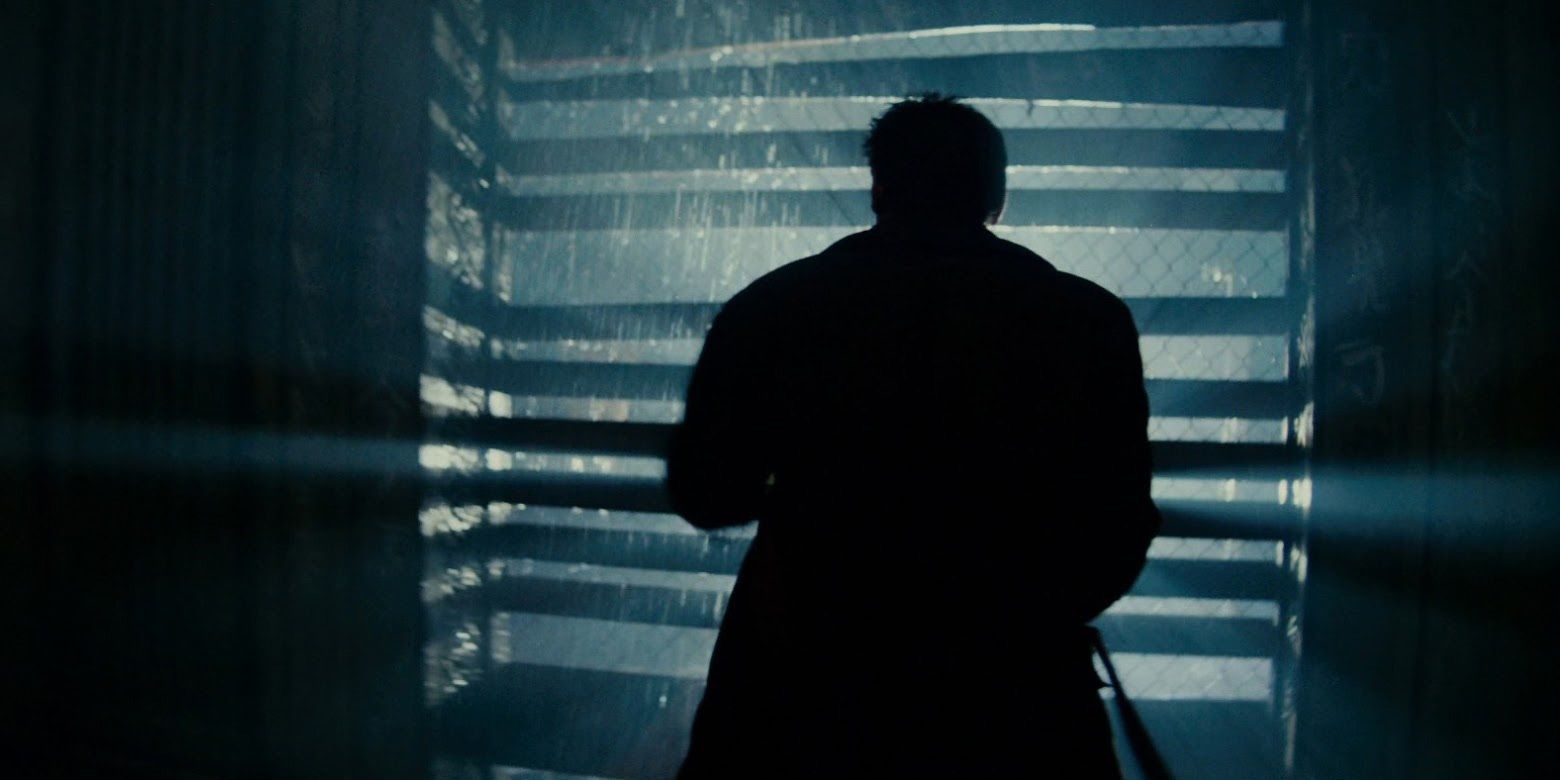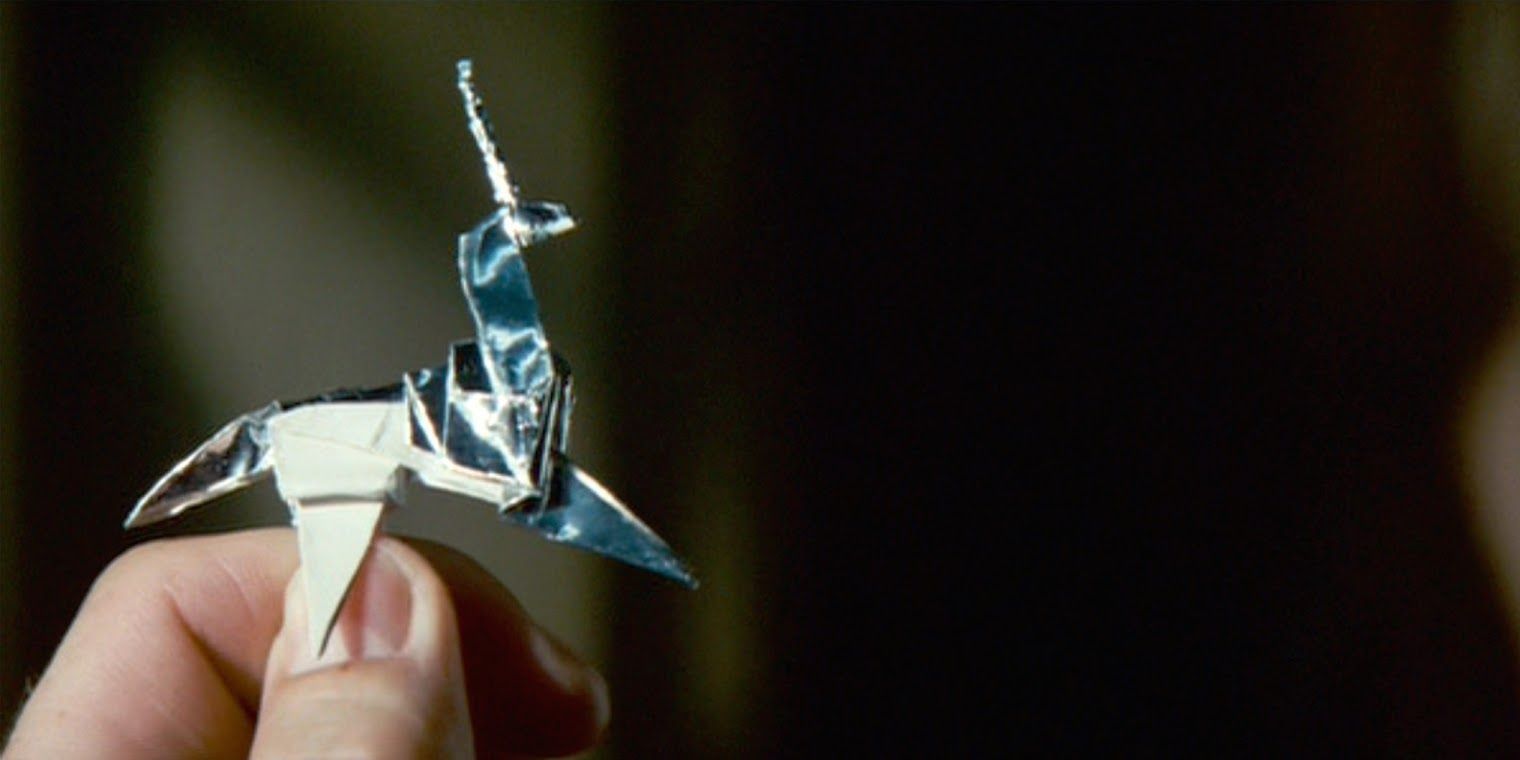Ridley Scott’s Blade Runner is one of the most revered science fiction movies ever made, exploring the ethics of artificial intelligence and what it means to be human through the lens of a detective story set in a dystopian future version of Los Angeles. The movie takes the tropes and conventions of film noirs from the 1940s and transplants them into a futuristic setting.
By blending cyberpunk settings and concepts with noirish visuals and storytelling, Blade Runner practically invented its own genre. The neo-noir was pioneered by Roman Polanski’s Chinatown almost a decade earlier, but Blade Runner was the first movie to bring sci-fi elements to the genre.
A Hard-Boiled Detective Story (With Robots)
The most obvious example of a noir trope appearing in Blade Runner is the hard-boiled detective story. Rick Deckard is characterized in the mold of grizzled detective characters like Sam Spade and Philip Marlowe.
The sci-fi twist is that Deckard’s investigation revolves around identifying androids who have integrated themselves into human society and eliminating them.
Urban Decay (In A Futuristic Setting)
Urban decay is a huge theme in the film noir. The settings of noirs (usually Los Angeles, as is the case with Blade Runner) have a huge class divide, a sky-high crime rate, and ominous skyscrapers towering over swarms of dispirited citizens.
Blade Runner has all these things, but in a futuristic setting. There’s more smog, more disparity between the social classes, and the skyscrapers are even taller.
Voiceover Narration (Explaining The Tech-Noir Mythology)
Deckard’s voiceover narration only appears in the theatrical cut of Blade Runner. Ridley Scott hated it, because it explained everything — like the meaning of the slur “skin-job” — in a way that sucked all the art and ambiguity out of the movie.
Voiceover narration is a common trope in the film noir genre, from Double Indemnity to Sunset Boulevard, but it’s also derided as unsubtle, or an easy way to convey character.
Femme Fatale (Who’s An Android)
Sean Young’s character, Rachael, is kind of a subversion of the femme fatale. Her unclear allegiances, her tumultuous romance with the hero, and her indifference to killing all point to her being a femme fatale.
But Rachael is an android. She isn’t like the other replicants and even comes across as a victim, which subverts the usual expectations of femme fatale characters. Deckard’s decision not to kill her makes sense.
A Hero With Questionable Ethics (About Speculative Ethical Concerns)
It’s common for the heroes of film noirs to have questionable morals. Rick Deckard adheres to this, but the ethical concerns at play are all speculative (at least they were at the time) about genetic engineering and the rights of sentient AIs.
Scott draws parallels between genetic engineering and playing God, shown in the Biblical allusions in the dialogue and Sebastian and Tyrell’s chess game mirroring 1851’s “Immortal Game,” representing humankind’s struggle against the mortality imposed by God.
Saxophone On The Score (Mixed In With Synthesizers)
The score for Blade Runner was composed by Vangelis, capturing the futuristic setting and speculative themes of the story with electronic instruments (mostly synthesizers).
However, the score also utilizes a saxophone for Deckard and Rachael’s “love theme,” to both homage the music of film noir and contrast the emotional storyline with the tech noir storyline.
Alcoholic Protagonist (Drinking From Strange Glassware)
In almost every film noir, the protagonist is a heavy drinker. It’s easier to picture a Humphrey Bogart detective character with a whiskey tumbler in his hand than without one.
Blade Runner’s Rick Deckard continues this tradition. He can be seen enjoying an alcoholic beverage in almost all of his scenes. He even continues his hard drinking after getting a split lip.
The Bradbury Building (Dressed Up As A Long-Forgotten Relic)
The Bradbury Building was used as a filming location for Blade Runner, and has appeared in a ton of classic film noirs. After being made iconic as the insurance office in Double Indemnity, the Bradbury Building appeared in The Unfaithful, D.O.A., and Shockproof.
Ridley Scott was initially criticized for choosing the Bradbury Building for Sebastian’s apartment and the rooftop seen in the climax, but he promised to shoot it in a way no one had seen it before. He added a canopy and twisted columns made of Styrofoam to the exterior, and filled the interior with smoke, trash, and revolving spotlights.
Sharp Contrasts In The Lighting (With Neon Lights)
Film noirs are lit in a very specific way. Having started in black-and-white and thriving in that format, noirs utilize sharp contrasts in the lighting, like sunlight peeking through a set of blinds on the window of a dark room.
In the case of Blade Runner, those sharp contrasts are there in almost every scene, but the lights are usually neon lights beaming from the futuristic L.A. skyline.
Ambiguous Ending (Involving Implanted Memories)
The ambiguous ending that provides no closure on Deckard and Rachael’s fate only appears in Ridley Scott’s director’s cuts because it was removed from the theatrical release at the behest of the studio. They wanted a happy ending where Deckard and Rachael escape to the countryside, which is very jarring in the context of the movie.
In Scott’s ending, Deckard sees an origami unicorn and questions whether or not he’s human. It’s common for film noirs to have ambiguous endings like this, but the concept of AIs being implanted with memories keeps this plot turn firmly in sci-fi territory.

